Four Employer Principles for Family Prosperity
The global pandemic has exacerbated social and economic hardships for families, and it’s more clearly revealed to employers the long-standing workplace policies and practices that prevent parents and caregivers from fully participating in the workforce. Comprehensive, integrated, and fair policies for workers are critical not only for parents, caregivers, and their children, but they’re essential for businesses and communities to thrive. Fortunately, a growing number of organizations recognize that policies that guarantee adequate pay, leave benefits, and the right to organize are foundational to a vibrant workforce. These principles, which were developed by Ascend at the Aspen Institute’s Family Prosperity Innovation Community over the past two years, provide a roadmap for employers to design family-supportive policies and programs that better support their staff and their loved ones.
Ascend at the Aspen Institute invites you to sign on to the Four Employer Principles for Family Prosperity! Employers who sign on to the principles publicly acknowledge a shared goal of achieving the vision of good jobs for all parents and caregivers, especially those with low incomes.
- 1. Equal Opportunity
- 2. Equitable, Inclusive, & Fair Policies
- 3. Health Supports
- 4. Employee Partnerships
1. Equal Opportunity
Workplace benefits should be universally and equally available to all employees within an organization, regardless of position, status, or tenure. All employees deserve clear and timely information about their workplace benefits.
More Info
Employees receive adequate information to understand and access programs and policies related to worker issues. According to JUST Capital’s research, key issues requiring transparency include whether the company pays men and women equally; prioritizes diversity and equal opportunity in the workplace; offers paid time off and paid parental leave policies; provides supplementary or backup day care services; allows flexible working hours; publishes formal policies for professional development and skills training; and provides tuition reimbursement
Examples at work
Good News Mountaineer Garage of West Virginia partners with the state’s TANF program to provide donated cars to Temporary Assistance for Needy Families (TANF) clients. A survey conducted in 2009 found that 35 percent of car recipients reported increased ability to attend school activities for their children and access to better childcare options. 21 percent of recipients moved into better housing and 31 percent reported that they were able to improve their medical care.
2. Equitable, Inclusive, & Fair Policies
Workplaces are inclusive, equitable, and fair in their policies, practices, benefits, and hiring procedures.
More Info
A fair workplace follows antidiscrimination laws and listens to its employees and their needs. Employees work and fulfill their roles as parents and caregivers because they have sufficient time and resources. In an inclusive and equitable workplace, employers consider gender, racial, and economic equity, paying special attention to populations that are disadvantaged and often excluded from beneficial policies, to make sure that they have access to benefits that level the playing field. Employment is accessible to everyone, including parents who have transportation barriers or children with disabilities
Examples at work
Cisco Systems constructed the LifeConnections Children’s Learning Center, operated by Bright Horizons on its campus in Milpitas, California. This facility is available to all Cisco employees and contractors for a fee. Scholarships are also available to employees with low incomes. The center provides full and part-time childcare for up to 450 children and functions as a back-up childcare option for unexpected lapses in childcare needs.
3. Health Supports
Integrating and connecting approaches to physical, emotional, and mental health supports into job benefits are critical to thriving employees.
More Info
Comprehensive array of additional programs and supports for employees with low incomes and their families — such as childcare, transportation assistance, mental health counseling, mentoring, and education — recognize that economies, companies, and communities thrive when workers are physically and emotionally well and able to support their families.
Examples at work
To address the economic security issues faced by their students, Central New Mexico Community College (CNM) collaborated with Prosperity Works, Nusenda Credit Union, and other community partners to create a comprehensive parenting student support program that is centered around a financial literacy course. Students enrolled in the course, and their children, are provided a free dinner prior to the start of class. Additionally, CNM leverages cross campus services to connect students who are parenting with childcare, emergency food, dental care, behavioral health, and other community services.
4. Employee Partnerships
Employees are invaluable partners in designing effective, sustainable policies that enable employees to thrive in their work and family life.
More Info
Employers will collaborate with staff and other community stakeholders across sectors to create a constellation of programs and choices. The efficacy of information that employers provide to employees is assessed and measured. Feedback loops exist and work effectively to share information bidirectionally between employers and employees. Workers need interaction with trusted organizations as well as employer support.
Both employers and employees must be supported to ensure effective, sustainable implementation. Government agencies and business associations can provide technical assistance to help employers enact work/family-supportive policies and benefits consistently and fairly and allocate sufficient resources to support these policies and benefits. Implementation is monitored, assessed, and refined by both employers and employees. As a step further, contractor, vendor, certification, and partnership guidelines evaluate work and family support policies. In addition to benefits for individual employees, private sector employers incentivize and fund workplace benefits, such as leave banking and lactation supports, and ensure that there are feedback loops.
Examples at work
The Family Partnership of Minnesota implemented a Work-Family Supports Parent Leadership Project with the objective of increasing support for working families. Participants come together every four to six weeks for a duration of nine months to engage in community forums, coalitions, and hearings relevant to work-family supports.
Founding Employer Signatories



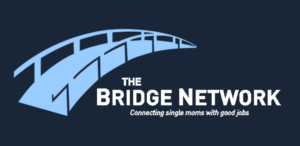


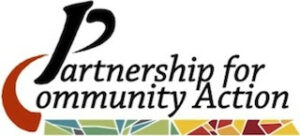



Frequently Asked Questions
ADDITIONAL RESOURCES
Suite of Family Prosperity Assets & Resources: The Family Prosperity Innovation Community seeks to solve the biggest challenges and threats to family prosperity by identifying a set of policies and practices that can transform the way workplaces and federal and state policymakers can employ, train, and support working families – particularly those with low incomes. With child and family outcomes at the center, each of our partners creates products and tools with recommended strategies to tackle big, complicated problems like the child care crisis or lack of paid leave.
Template Outreach Letter from Employees to Employers: We all share a collective responsibility to address longstanding structural inequities and the lingering impacts of the pandemic by calling on policymakers and business leaders to take collaborative action. Share this campaign with your peers, managers, or HR team to help build a society that values working families.
SPREAD THE WORD
Join others leading the charge to build better, more equitable, and sustainable career opportunities for parents and caregivers. Share the below graphics and messaging amongst your networks to increase visibility of this campaign and increase organizations’ understanding of their shared responsibility to advance family prosperity for employees, their families, and communities.
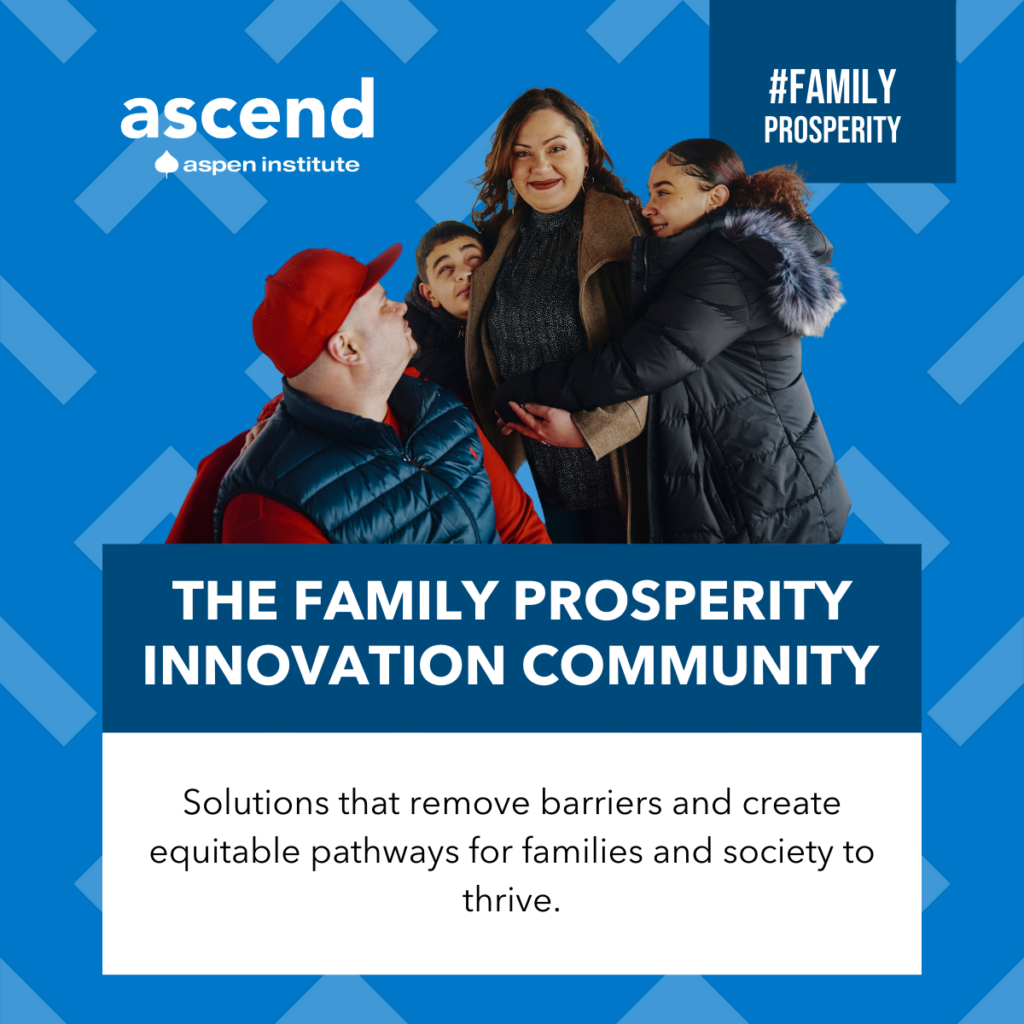
Join forces with families, employers, and policy leaders to create strategies and solutions that clear the path to #FamilyProsperity.
Learn more: https://ascend.gray64.dev/ascend-family-prosperity/
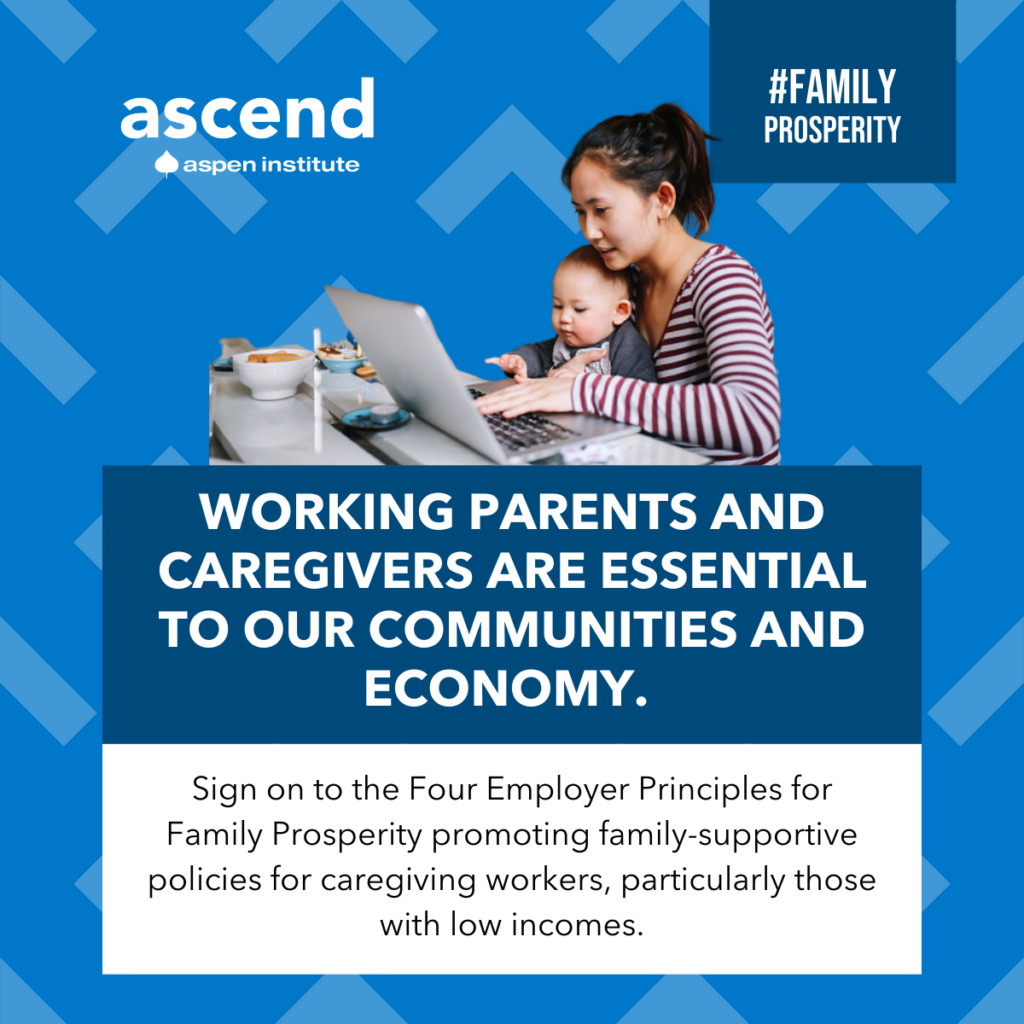
Help achieve the vision of good jobs for all parents and caregivers. Sign the Four Employer Principles for #FamilyProsperity.
Learn more:
https://ascend.gray64.dev/family-prosperity/employer-principles/
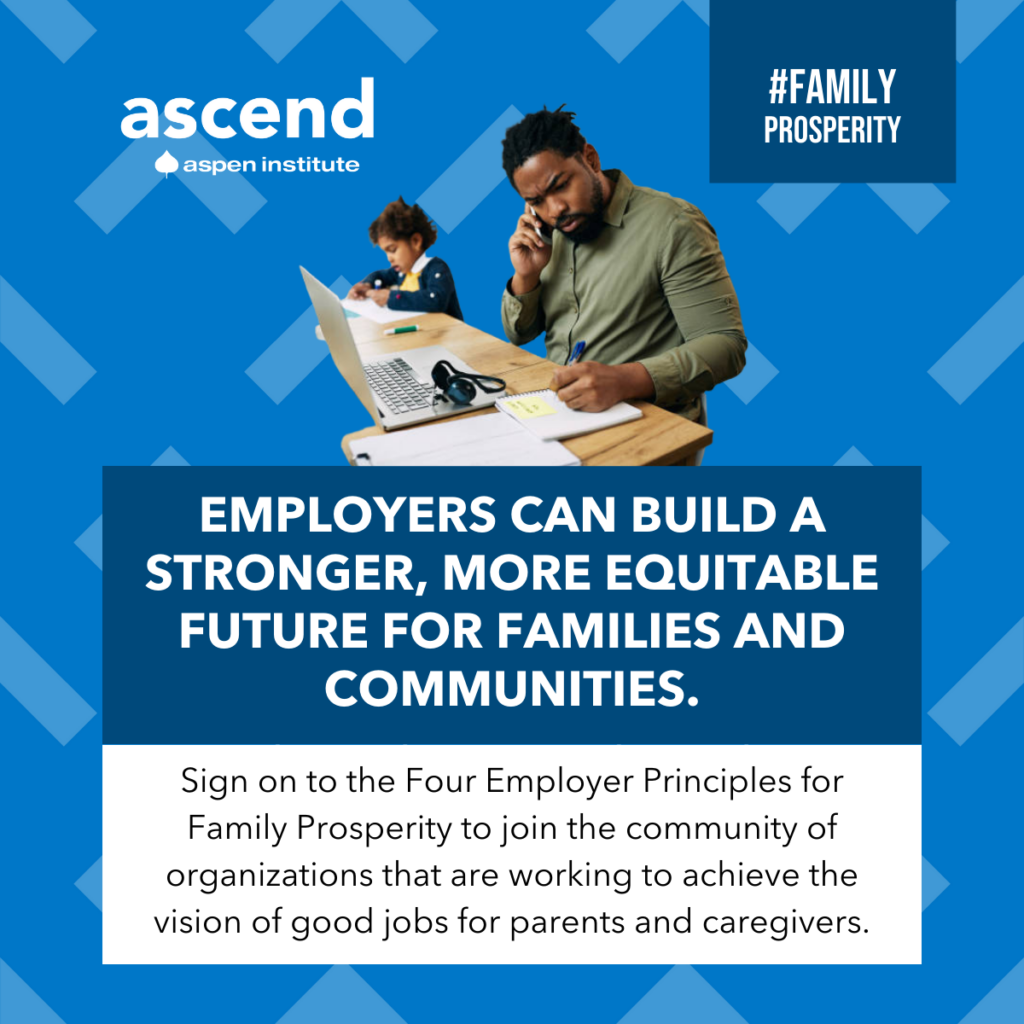
To support all working parents and caregivers, particularly those with low incomes, companies must step up in this moment of crisis to attract and retain workers.
Sign the employer principles for #FamilyProsperity!
https://ascend.gray64.dev/family-prosperity/employer-principles/





